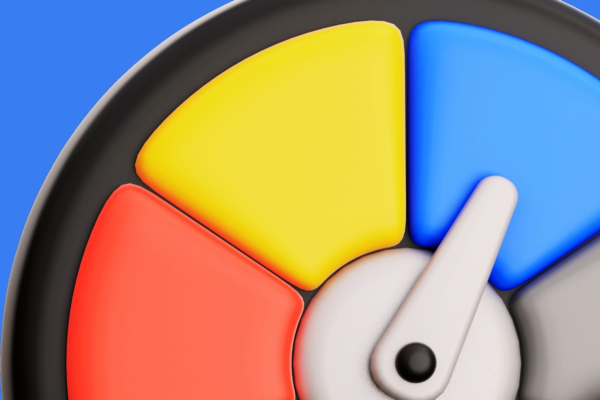
Get Out of Credit Card Debt: What to Do and How to Do It

In 2022, credit card debt in the United States hit an all-time high of $930 billion— a number far surpassing the previous peak during the 2008 financial crisis. The typical American has three credit cards, and the average credit card debt sits at $5,525 per household.
If you find yourself among the millions carrying credit card debt, you might be looking for a way out. Climbing out of debt isn’t always easy, but it is possible. We’re here to show you how you can break the cycle and work towards financial health.
Getting out of debt looks different for everyone. You might have more or less money to throw at your debt, but the basic concepts remain the same. And if you don’t have the extra cash to use on your debt now, don’t let that stop you from making a plan. When you’re in a position financially to take care of your debt, you’ll be ready to hit the ground running.
How to Get Out of Credit Card Debt
These five steps can put you on your way to paying off looming credit card debt.
1. Assess your debt.
Before you create a plan to tackle your debt, it helps to know exactly what you are dealing with. How you approach your credit card debt will depend on things like:
- The number of cards you have
- The interest rate on each of those cards
- Your balance on each card
- Introductory deals you may have on cards and when those expire
Why do those things matter?
If you only have one card, coming up with a plan is relatively easy. All the money you have to put towards paying off your debt will go to that one card. But if you have two or more, you’ll have to put a little more thought into your strategy, which we’ll talk about next. To start, get out your credit card statements and note down the info we outlined above.
Fee-Free Banking is Here
Looking for a financial institution that doesn’t nickel and dime you? If you live or work in Texas, join Amplify!
2. Assess your budget.
After you have a better idea of your debt, you can get a picture of your overall financial situation.
The main question: How much can I put towards paying off my debt each month?
Creating a budget is the most straightforward to get the answer. You might think you don’t have a lot to spare, and that might be true. But a budget will allow you to see if you can cut expenses in order to put more towards paying off your debt—without ignoring your financial obligations.
If you’re new to the world of budgeting, you can learn more about the different methods here.
3. Make a plan.
Next, decide how you are going to approach your debt repayment. You have four main options:
Option 1: Pay Off the High-Interest Debt First
Looking at your list of credit card info that you’ve gathered, which card has the highest interest rate? This may be the one you want to pay off first. Starting with this one card will help you focus your efforts on a specific goal and save you money by eliminating your biggest interest charges first. This method is commonly referred to as the “avalanche method”.
Don’t completely neglect your other balances— be sure you’re making the minimum payment each month so you don’t get sent to collections.
Option 2: Pay Off the Smallest Balance
Are you motivated by small accomplishments? Then the method commonly referred to as the “snowball method” might be right for you. With this strategy, you’ll start by focusing your repayment efforts on the smallest balance, regardless of interest rate. Once that card is paid off, you’ll move on to the next smallest.
As with the avalanche method, you don’t want to completely neglect your other cards when using the snowball method. Continue to make your minimum payments on each card but funnel any additional funds into paying off the one card.
Option 3: Consolidate Your Debt
Some borrowers opt to pay off their credit cards using a lower-interest personal loan. This is called debt consolidation. Rolling multiple debts into one loan can be beneficial for several reasons:
- It is easier to keep track of monthly payments since there is now only one loan.
- You save by paying less in interest while you repay the loan balance.
- You have a structured repayment plan and an end date in sight.
Before taking out a consolidation loan, it’s important to ensure that you have the means to make the monthly payment.
Option 4: Get a Balance Transfer Credit Card
Transferring your balances to a credit card with low- or no-interest introductory offers is another way that you can consolidate your debt. Instead of taking out a loan to pay off the other cards, you’ll simply transfer them to a new card.
If you go this route, it’s important that you pay off all or most of your debt during the introductory period, which can vary from card to card. After that initial period is over, so will the low-interest promotion. If you still have a balance, it will start accruing interest at the regular, higher rate.
4. Don’t rack up more debt.
It is impossible to pay off debt if you’re spending more than you’re paying each month. As you stick to your repayment plan, make sure that you are also doing your best to pause your credit card spending. Choose swiping your debit card or using cash instead.
5. Know your other options.
If you try these strategies and find yourself still unable to escape your debt burden, you have additional options.
A good place to start is consumer credit counseling provided by nonprofit agencies. These types of resources are usually free and provide you with additional guidance and tools that can help you pay off your debts.
When seeking out credit counseling, be sure to find a reputable organization. Unfortunately, there are scammers out there who prey on people in vulnerable situations. The Consumer Financial Protection Bureau (CFPB) recommends starting your search with the Financial Counseling Association with America or the National Foundation for Credit Counseling.
One Step at a Time
Tackling credit card debt can feel a lot like trying to climb an insurmountable mountain. The key is to take it step-by-step. Start by assessing your debt and your overall financial situation. From there, you can determine what method is right for your repayment strategy. While it’s good to have a plan for the future, it’s also important to take things month by month. Reassess your situation and adjust your plan as needed.
Become an Amplify Member
Every Amplify account holder enjoys fee-free banking. That means no overdraft, maintenance, or other banking fees cutting into your pocket.


